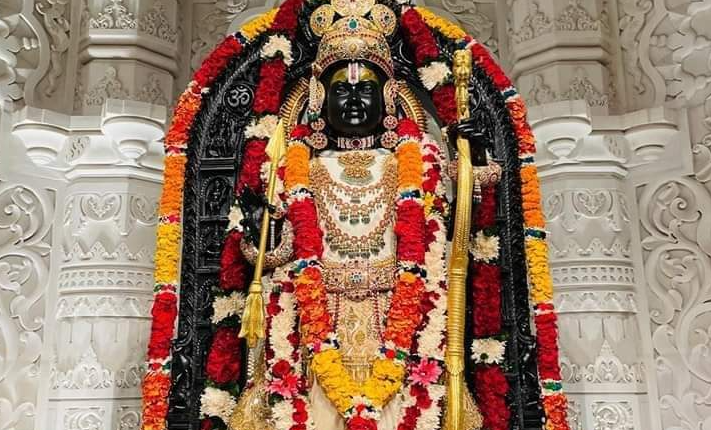The idol of Ram Lalla in Ayodhya on Friday was adorned with a stunning outfit crafted from Assam’s Muga and Eri silk, marking the auspicious occasion of Akshaya Tritiya.
Designed by Manish Tripathi, the dress features intricate Vaishnavite motifs and took about 45 days to complete. Tripathi says the dress has intricate embroidery designs made of real gold wires, and features motifs such as the shankha, peacock, and shankha gada.
Muga, renowned as the ‘Golden Silk of Assam’ for its distinctive golden-yellow hue, stands as one of the rarest silks globally. Derived from semi-cultivated silkworms called Antheraea assamensis, this organic natural fiber is known for its remarkable strength and longevity, coupled with a fine texture.
Endemic to Assam and certain northeastern regions of India, the Muga silkworm thrives in the favorable environmental and climatic conditions of these areas. Awarded the Geographical Indication (GI) tag in logo for trademark purposes in 2014, Muga silk’s low porosity makes it challenging to bleach or dye. However, as the fabric ages, its golden luster intensifies, while also serving as a shield against harmful UV rays.
Integral to Assamese culture, Muga silk finds prominence in traditional attire. The dancers in traditional Assamese folk dance Bihu wear only Muga dresses. Historically, its exclusive use was reserved for the royal family and nobility during the extensive reign of the Ahom kings. Muga silk is utilized in crafting various garments including mekhela chador, sarees, kurtas, and stoles.
The art of rearing Muga cocoons demands exceptional skill, providing a vital source of livelihood for local tribal communities in Assam. Additionally, the state produces other unique silks such as Eri or Endi, renowned for its rough texture ideal for warm shawls.
Eri silk, primarily distinguished by its dense, coarse texture and matte appearance with a dull golden-yellow luster, holds the top position among non-mulberry silk varieties. It is predominantly found in the hill tracts of northeastern states, along with select regions of Bihar, West Bengal, and Orissa.
Silk accounts for approximately 3% of the global textile trade, with India’s share in global raw silk production at 17.5%, as per the Government of Assam.



799710 367637Oh my goodness! an wonderful post dude. Thanks a ton Nonetheless I is going to be experiencing dilemma with ur rss . Do not know why Not able to join it. Can there be everybody acquiring identical rss concern? Anybody who knows kindly respond. Thnkx 854224
630949 4878Thank you for the auspicious writeup. It in reality was a amusement account it. Appear complicated to far delivered agreeable from you! Nevertheless, how can we keep in touch? 538329
576011 501154You know, lots of persons are looking around for this information, you could help them greatly. 852003